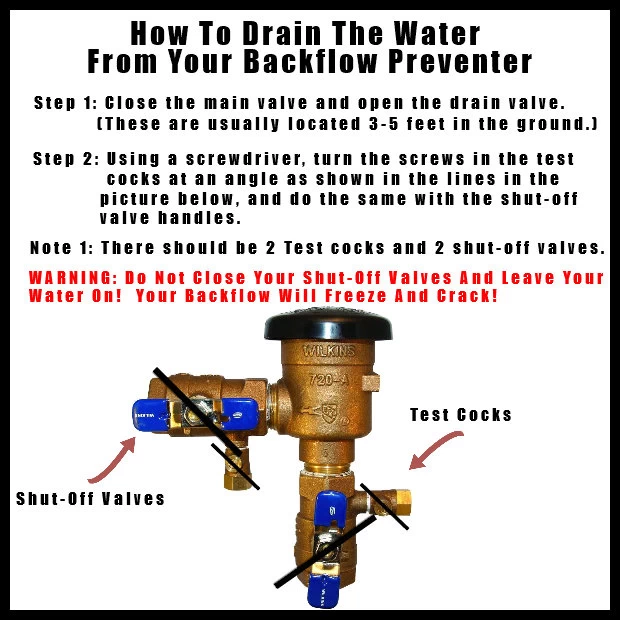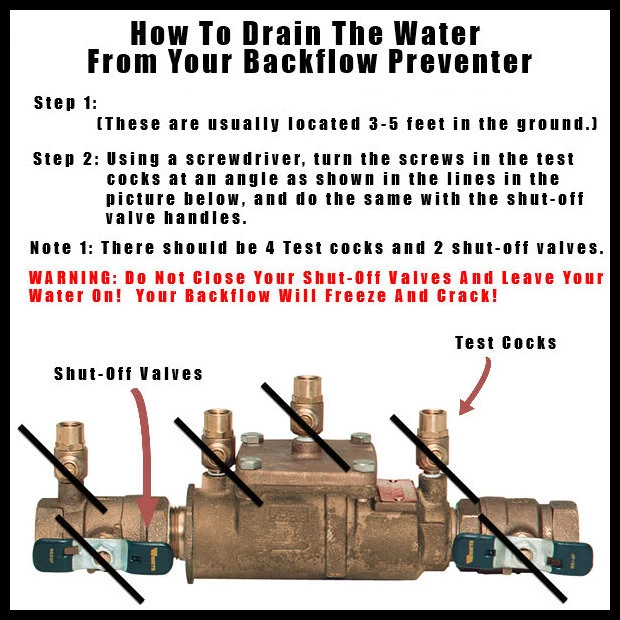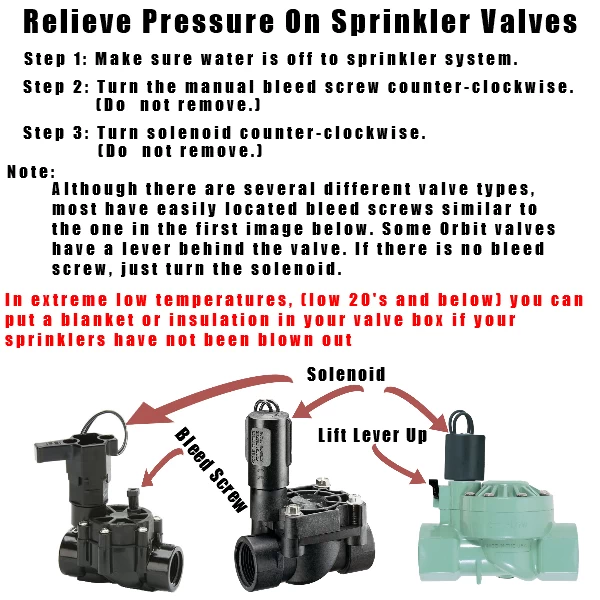Understanding Freezing Temperatures and Sprinkler Systems
When the weather forecast drops below freezing, it’s easy to panic about your sprinkler system. But here’s the thing — ambient temperature (the air temperature you see on your weather app) is not the same as ground temperature, and that difference makes all the difference in whether your system is safe.
Ambient vs. Ground Temperature
Air temperature changes quickly — it can fall from 50°F to 25°F overnight. The ground, however, is stubborn. Soil is dense and full of moisture, which means it retains heat and cools much more slowly. Even when the air dips below freezing for a night or two, the ground several inches below the surface can stay well above 32°F.
According to the National Weather Service and USDA soil temperature data, soil temperatures in southern Idaho at 8–12 inches rarely drop to freezing until mid-December or even January. In most years, the ground acts like a giant thermal blanket for your underground sprinkler lines.
Why Your Underground Lines Are Usually Safe
Most sprinkler systems are buried 8 to 12 inches deep. At that depth, the soil temperature lags weeks behind air temperature. It takes several consecutive days of round-the-clock freezing — not just chilly nights — before frost penetrates deeply enough to reach those lines.
The real risks early in the season come from above-ground components — backflow preventers, valves, pumps, and filters — which have direct exposure to cold air. These are the first parts to freeze when the thermometer takes a dive.
Protecting Above-Ground Irrigation Components
Even though underground irrigation lines are well-insulated by the earth and rarely freeze until deep winter, above-ground components like backflow preventers, valves, filters, and pumps are highly vulnerable once temperatures drop into the 20s. Fortunately, these can all be drained and winterized quickly and safely while you wait for your full sprinkler blowout.
Backflow Preventers
Before opening any test cocks, it’s important to turn off the main irrigation shut-off valve and open the drain. These two valves are usually located in separate 4-inch valve tubes with caps, or sometimes together in a 10-inch round valve box near the backflow assembly — not inside the water-meter box.
Once the main line is closed and the drain is open, you can safely drain the backflow itself. Use a flat-head screwdriver to turn each test-cock screw to a 45-degree open position, allowing air in and water out. Then turn both shut-off-valve handles at similar 45-degree angles. This vents any remaining water trapped inside and prevents the brass body from cracking when temperatures dip below freezing.
⚠️ Never leave your main water supply on while your shut-off valves are closed. This can trap pressurized water inside the backflow and cause it to freeze and split.
Pumps
Turn off power at the breaker or nearby switch, then remove the small drain nut at the bottom of the pump with a wrench. Open a hose bib or plug above the pump to release vacuum pressure and allow all water to drain completely. Replace the nut after draining so the system can be properly blown out later.
Filters
Unscrew the bottom cap of the irrigation filter and let the water drain completely. If the filter is in a valve box and sits at an angle that prevents full draining, leave the cap off to allow expansion in freezing conditions. For exposed filters, draining is especially critical to avoid cracking.
Valves
If your system hasn’t been blown out yet, you can relieve pressure by turning the small manual bleed screws on each valve counterclockwise (do not remove them). You can also twist the solenoid slightly counterclockwise to let trapped air or water escape.
⚠️ Make sure the main irrigation water supply is shut off first, or you’ll give your yard an unexpected watering — and yourself a cold shower. Happens more often than you’d think.
In extreme cold (low 20s and below), add insulation or a towel over the valve box for extra protection.
These simple steps can save hundreds of dollars in repair costs and buy you peace of mind until your system is fully winterized.
When to Take Action
While there’s no need to panic at the first frosty morning, it’s smart to:
- Disconnect hoses and drain exposed pipes when nighttime temperatures consistently drop below freezing.
- Insulate above-ground parts, like backflows or exposed piping, with foam or insulated covers.
To make things easy, you can sign up with The Maintenance Shop to have your sprinkler system professionally blown out using our convenient online form:
👉 Sprinkler Blowout Sign-Up Form
The Takeaway
Just because it’s freezing outside doesn’t mean disaster is looming underground. The soil’s natural insulation keeps most sprinkler systems safe until well into winter. By draining exposed parts and covering your backflow preventer, you’re buying time — safely — until your professional blowout appointment.
In short: your sprinkler system isn’t as fragile as it looks, and with a little preventive care (and a dry sense of humor), it’ll weather early-season freezes just fine.
Common Irrigation Components and How to Winterize Them
Below are images of the most common sprinkler and irrigation components, each showing how to properly drain and protect them before freezing temperatures arrive.
To make things easier, print the one that best matches your setup and keep it near your sprinkler timer as a quick reference during cold snaps.






